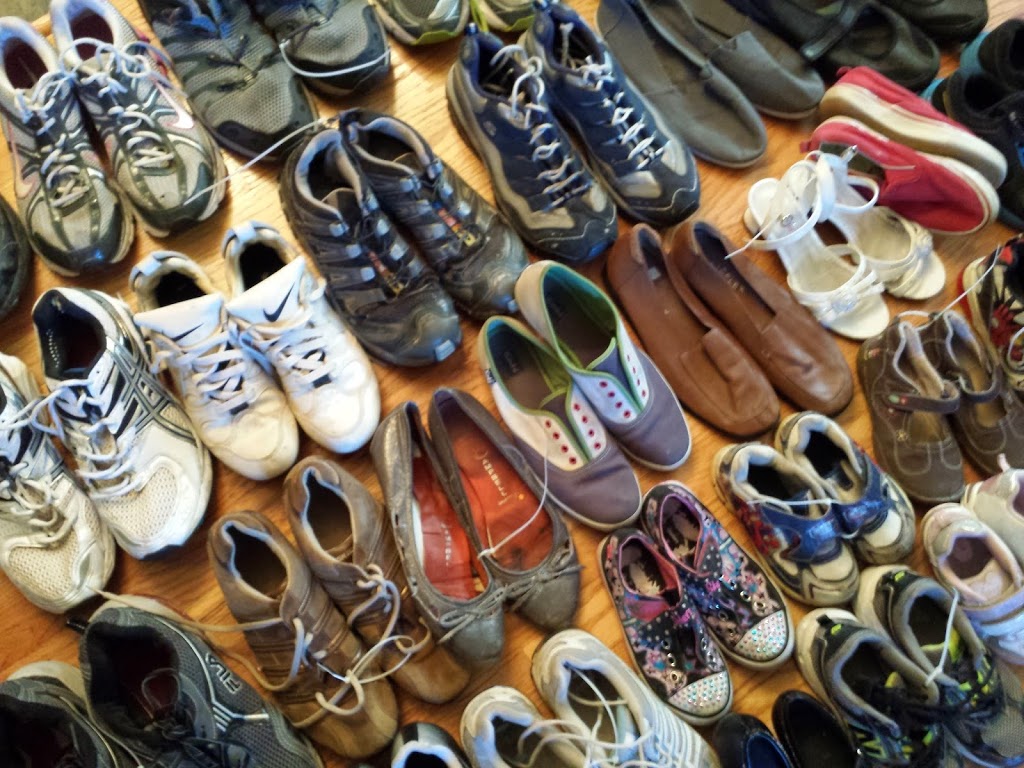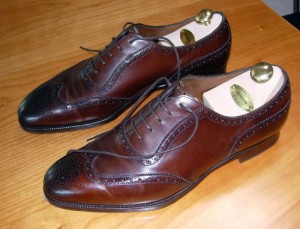 You probably have more invested in your shoes than any other part of your wardrobe. Keeping that investment in tip-top shape and making it last for years to come takes more than the occasional spit and polish. Here are ten tips to keep your shoes in their best condition and make them last.
You probably have more invested in your shoes than any other part of your wardrobe. Keeping that investment in tip-top shape and making it last for years to come takes more than the occasional spit and polish. Here are ten tips to keep your shoes in their best condition and make them last.
1. You get what you pay for.
You should only buy the best shoes you can afford if you want them to last. Poor quality, bargain-store brands usually don’t hold up to everyday wear and tear. The materials and manufacturing process of cheaper shoes aren’t what they should be, nor are they the same as what goes into more expensive brands. Buying good quality shoes simply makes sense if you expect them to last.
2. Slow and steady wins the race.
Wet shoes should be allowed to dry slowly and naturally. Never place your wet shoes on a furnace or in front of a fire as the heat that dries them often does so too quickly. Leather shoes, sewing, and laces are at risk of shrinking. This rapid shrinkage can cause your shoes to crack or tear. Speedy drying of shoes can also cause discoloration of the leather and other materials. Excess heat will also cause rubber in shoes to melt or deform.
3. Two’s company.
Keep your shoes neatly lined up and matched with their mates. Jumbling shoes into a pile at the bottom of your closet or in a basket or bin by the door leads to scratches and scuffs. Matching your shoes in pairs prevents this and ensures that you can find and wear your shoes more easily.
4. Keep in shape.
Use shoetrees when you’re not wearing your shoes. These wooden or plastic forms will help your shoes hold their shape. Use shoehorns when you put your shoes on. Untie and completely loosen the laces or straps before taking your shoes off. Doing both routinely will prevent the collar (the part of the shoe that hugs your ankle) from becoming worn from either tugging the shoe on or pulling it off. Never use the toes of one foot to remove the back of your shoe on the other foot. Give your shoes some time to rest to help them keep their shape and condition. If possible, don’t wear the same pair of shoes for more than two days in a row. A little rest is good for your feet and your footwear.
Regular cleaning and polishing is the best form of maintenance you can provide your shoes. Each type of shoe and each shoe material determine exactly what goes into keeping your shoes neat and clean, so be aware of proper footwear care. Consider waterproofing shoes worn in wet climates or in wetter seasons. Preventing water from reaching the full surface of the shoe will prevent the need for more frequent cleaning and polishing. Remove any mud or dirt that accumulates on your shoes as soon as possible and without allowing it to dry. Dried mud can cause permanent damage or discoloration to your shoes.
6. No fun in the sun.
Or in the heat, for that matter. Keep your shoes out of the sun and away from direct sources of heat as much as possible when you’re not wearing them. The bright sun and warm air from the furnace can dry out your shoes. Certain materials, including leather, suede, and vinyl, can become too brittle, leading to cracking, breaking, or separating of the shoe’s materials. To avoid this, store your shoes in a cool dark place, like under your bed, in the bottom of a closet, or in a shoe holder on the back of a closet door.
7. Get it right.
It may seem more like a foot problem than a footwear problem, but wearing the wrong shoes for the activity you are involved in can cause harm to your shoes and your feet. Walking shoes, not your favorite pumps, were made for tromping all over town. The heels you bought for a night of dancing? Don’t wear them to your sister’s outdoor wedding. Properly matching the shoe to the activity reduces the chance that your shoes will become damaged or stressed in the process. Dress your feet for success, and your shoes will be up for the challenge.
8. Stay on tap.
Having a cobbler add rubber taps to the heels and toes of your new shoes adds a great deal of length to their lifespan. When you walk, you typically place the most pressure on the front and back of your shoes, causing the soles to wear quicker in the heel and toe. Adding rubber taps prevents this as the tap becomes worn a lot sooner than the actual sole. Taps can be removed and replaced, adding years and years to your favorite pair of loafers or pumps.
9. Know your limits.
There are certain shoe maintenance tasks that you can do on your own. Polishing, buffing, shining patent leather, cleaning canvas or suede—these are all chores that you can do yourself. Other, more difficult tasks or those involving structural changes, like stretching your shoes, are best left to a professional cobbler. He or she will have the tools and the knowledge to get the job done right without risk of damage to your shoes.
10. Find a helping hand.
Finding a good cobbler who can supply your shoe wardrobe with the tender loving care it needs can mean the difference between years of wear and early retirement for your shoes. Professional applications of caps, waterproofing, stretching, re-stitching, and other repairs and upkeep can keep you on your toes. You’ve put a lot of good money into your shoe collection. Your shoes add to your look and get you through the roughest days. Make sure that you get the full return on that investment with a little time and a lot of love and care.










